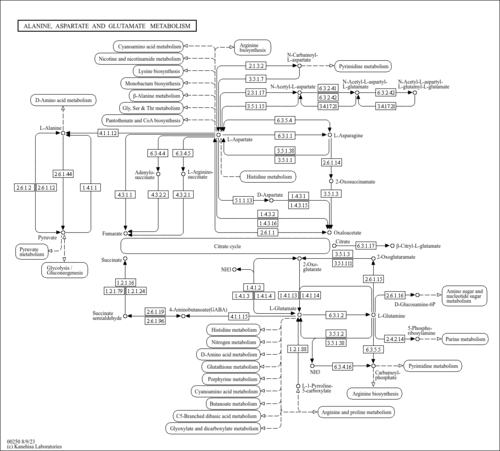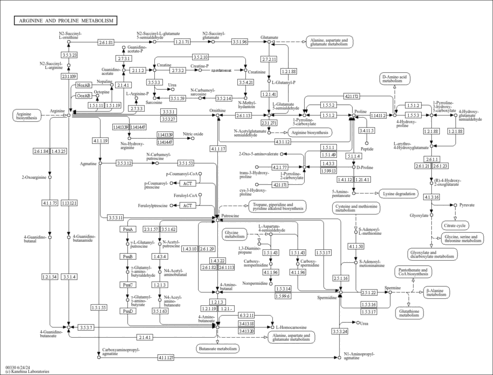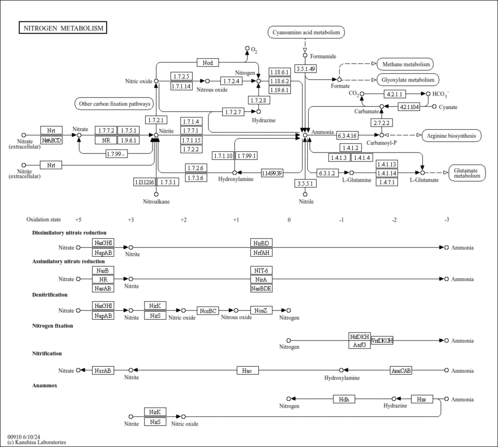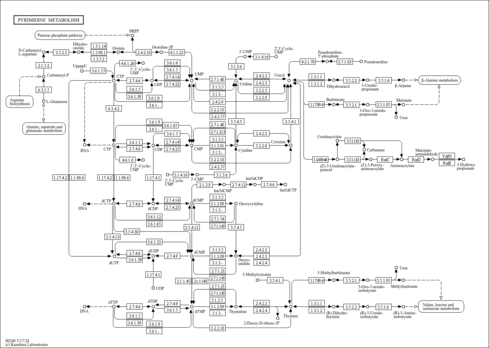| Chromatographic Method | Retention Time | Reference |
|---|
| Measured using a Waters Acquity ultraperformance liquid chromatography (UPLC) ethylene-bridged hybrid (BEH) C18 column (100 mm × 2.1 mm; 1.7 μmparticle diameter). Predicted by Afia on May 17, 2022. Predicted by Afia on May 17, 2022. | 1.69 minutes | 32390414 |
| Predicted by Siyang on May 30, 2022 | 8.4643 minutes | 33406817 |
| Predicted by Siyang using ReTip algorithm on June 8, 2022 | 7.76 minutes | 32390414 |
| AjsUoB = Accucore 150 Amide HILIC with 10mM Ammonium Formate, 0.1% Formic Acid | 436.6 seconds | 40023050 |
| Fem_Long = Waters ACQUITY UPLC HSS T3 C18 with Water:MeOH and 0.1% Formic Acid | 444.5 seconds | 40023050 |
| Fem_Lipids = Ascentis Express C18 with (60:40 water:ACN):(90:10 IPA:ACN) and 10mM NH4COOH + 0.1% Formic Acid | 355.8 seconds | 40023050 |
| Life_Old = Waters ACQUITY UPLC BEH C18 with Water:(20:80 acetone:ACN) and 0.1% Formic Acid | 61.8 seconds | 40023050 |
| Life_New = RP Waters ACQUITY UPLC HSS T3 C18 with Water:(30:70 MeOH:ACN) and 0.1% Formic Acid | 263.2 seconds | 40023050 |
| RIKEN = Waters ACQUITY UPLC BEH C18 with Water:ACN and 0.1% Formic Acid | 163.9 seconds | 40023050 |
| Eawag_XBridgeC18 = XBridge C18 3.5u 2.1x50 mm with Water:MeOH and 0.1% Formic Acid | 262.5 seconds | 40023050 |
| BfG_NTS_RP1 =Agilent Zorbax Eclipse Plus C18 (2.1 mm x 150 mm, 3.5 um) with Water:ACN and 0.1% Formic Acid | 247.1 seconds | 40023050 |
| HILIC_BDD_2 = Merck SeQuant ZIC-HILIC with ACN(0.1% formic acid):water(16 mM ammonium formate) | 904.2 seconds | 40023050 |
| UniToyama_Atlantis = RP Waters Atlantis T3 (2.1 x 150 mm, 5 um) with ACN:Water and 0.1% Formic Acid | 554.4 seconds | 40023050 |
| BDD_C18 = Hypersil Gold 1.9µm C18 with Water:ACN and 0.1% Formic Acid | 40.8 seconds | 40023050 |
| UFZ_Phenomenex = Kinetex Core-Shell C18 2.6 um, 3.0 x 100 mm, Phenomenex with Water:MeOH and 0.1% Formic Acid | 568.1 seconds | 40023050 |
| SNU_RIKEN_POS = Waters ACQUITY UPLC BEH C18 with Water:ACN and 0.1% Formic Acid | 217.4 seconds | 40023050 |
| RPMMFDA = Waters ACQUITY UPLC BEH C18 with Water:ACN and 0.1% Formic Acid | 391.9 seconds | 40023050 |
| MTBLS87 = Merck SeQuant ZIC-pHILIC column with ACN:Water and :ammonium carbonate | 834.8 seconds | 40023050 |
| KI_GIAR_zic_HILIC_pH2_7 = Merck SeQuant ZIC-HILIC with ACN:Water and 0.1% FA | 534.7 seconds | 40023050 |
| Meister zic-pHILIC pH9.3 = Merck SeQuant ZIC-pHILIC column with ACN:Water 5mM NH4Ac pH9.3 and 5mM ammonium acetate in water | 476.0 seconds | 40023050 |
| Derivative Name / Structure | SMILES | Kovats RI Value | Column Type | Reference |
|---|
| Carbamoyl phosphate,1TMS,isomer #1 | C[Si](C)(C)OP(=O)(O)OC(N)=O | 1352.9 | Semi standard non polar | 33892256 |
| Carbamoyl phosphate,1TMS,isomer #1 | C[Si](C)(C)OP(=O)(O)OC(N)=O | 1422.2 | Standard non polar | 33892256 |
| Carbamoyl phosphate,1TMS,isomer #1 | C[Si](C)(C)OP(=O)(O)OC(N)=O | 2583.0 | Standard polar | 33892256 |
| Carbamoyl phosphate,1TMS,isomer #2 | C[Si](C)(C)NC(=O)OP(=O)(O)O | 1473.0 | Semi standard non polar | 33892256 |
| Carbamoyl phosphate,1TMS,isomer #2 | C[Si](C)(C)NC(=O)OP(=O)(O)O | 1556.5 | Standard non polar | 33892256 |
| Carbamoyl phosphate,1TMS,isomer #2 | C[Si](C)(C)NC(=O)OP(=O)(O)O | 2830.2 | Standard polar | 33892256 |
| Carbamoyl phosphate,2TMS,isomer #1 | C[Si](C)(C)OP(=O)(OC(N)=O)O[Si](C)(C)C | 1414.9 | Semi standard non polar | 33892256 |
| Carbamoyl phosphate,2TMS,isomer #1 | C[Si](C)(C)OP(=O)(OC(N)=O)O[Si](C)(C)C | 1515.6 | Standard non polar | 33892256 |
| Carbamoyl phosphate,2TMS,isomer #1 | C[Si](C)(C)OP(=O)(OC(N)=O)O[Si](C)(C)C | 2321.0 | Standard polar | 33892256 |
| Carbamoyl phosphate,2TMS,isomer #2 | C[Si](C)(C)NC(=O)OP(=O)(O)O[Si](C)(C)C | 1473.5 | Semi standard non polar | 33892256 |
| Carbamoyl phosphate,2TMS,isomer #2 | C[Si](C)(C)NC(=O)OP(=O)(O)O[Si](C)(C)C | 1577.8 | Standard non polar | 33892256 |
| Carbamoyl phosphate,2TMS,isomer #2 | C[Si](C)(C)NC(=O)OP(=O)(O)O[Si](C)(C)C | 2269.4 | Standard polar | 33892256 |
| Carbamoyl phosphate,2TMS,isomer #3 | C[Si](C)(C)N(C(=O)OP(=O)(O)O)[Si](C)(C)C | 1570.8 | Semi standard non polar | 33892256 |
| Carbamoyl phosphate,2TMS,isomer #3 | C[Si](C)(C)N(C(=O)OP(=O)(O)O)[Si](C)(C)C | 1682.9 | Standard non polar | 33892256 |
| Carbamoyl phosphate,2TMS,isomer #3 | C[Si](C)(C)N(C(=O)OP(=O)(O)O)[Si](C)(C)C | 2323.9 | Standard polar | 33892256 |
| Carbamoyl phosphate,3TMS,isomer #1 | C[Si](C)(C)NC(=O)OP(=O)(O[Si](C)(C)C)O[Si](C)(C)C | 1539.9 | Semi standard non polar | 33892256 |
| Carbamoyl phosphate,3TMS,isomer #1 | C[Si](C)(C)NC(=O)OP(=O)(O[Si](C)(C)C)O[Si](C)(C)C | 1628.6 | Standard non polar | 33892256 |
| Carbamoyl phosphate,3TMS,isomer #1 | C[Si](C)(C)NC(=O)OP(=O)(O[Si](C)(C)C)O[Si](C)(C)C | 1978.8 | Standard polar | 33892256 |
| Carbamoyl phosphate,3TMS,isomer #2 | C[Si](C)(C)OP(=O)(O)OC(=O)N([Si](C)(C)C)[Si](C)(C)C | 1575.5 | Semi standard non polar | 33892256 |
| Carbamoyl phosphate,3TMS,isomer #2 | C[Si](C)(C)OP(=O)(O)OC(=O)N([Si](C)(C)C)[Si](C)(C)C | 1628.3 | Standard non polar | 33892256 |
| Carbamoyl phosphate,3TMS,isomer #2 | C[Si](C)(C)OP(=O)(O)OC(=O)N([Si](C)(C)C)[Si](C)(C)C | 1875.0 | Standard polar | 33892256 |
| Carbamoyl phosphate,4TMS,isomer #1 | C[Si](C)(C)OP(=O)(OC(=O)N([Si](C)(C)C)[Si](C)(C)C)O[Si](C)(C)C | 1605.8 | Semi standard non polar | 33892256 |
| Carbamoyl phosphate,4TMS,isomer #1 | C[Si](C)(C)OP(=O)(OC(=O)N([Si](C)(C)C)[Si](C)(C)C)O[Si](C)(C)C | 1702.6 | Standard non polar | 33892256 |
| Carbamoyl phosphate,4TMS,isomer #1 | C[Si](C)(C)OP(=O)(OC(=O)N([Si](C)(C)C)[Si](C)(C)C)O[Si](C)(C)C | 1702.6 | Standard polar | 33892256 |
| Carbamoyl phosphate,1TBDMS,isomer #1 | CC(C)(C)[Si](C)(C)OP(=O)(O)OC(N)=O | 1638.2 | Semi standard non polar | 33892256 |
| Carbamoyl phosphate,1TBDMS,isomer #1 | CC(C)(C)[Si](C)(C)OP(=O)(O)OC(N)=O | 1650.0 | Standard non polar | 33892256 |
| Carbamoyl phosphate,1TBDMS,isomer #1 | CC(C)(C)[Si](C)(C)OP(=O)(O)OC(N)=O | 2824.5 | Standard polar | 33892256 |
| Carbamoyl phosphate,1TBDMS,isomer #2 | CC(C)(C)[Si](C)(C)NC(=O)OP(=O)(O)O | 1731.1 | Semi standard non polar | 33892256 |
| Carbamoyl phosphate,1TBDMS,isomer #2 | CC(C)(C)[Si](C)(C)NC(=O)OP(=O)(O)O | 1714.8 | Standard non polar | 33892256 |
| Carbamoyl phosphate,1TBDMS,isomer #2 | CC(C)(C)[Si](C)(C)NC(=O)OP(=O)(O)O | 2968.8 | Standard polar | 33892256 |
| Carbamoyl phosphate,2TBDMS,isomer #1 | CC(C)(C)[Si](C)(C)OP(=O)(OC(N)=O)O[Si](C)(C)C(C)(C)C | 1838.0 | Semi standard non polar | 33892256 |
| Carbamoyl phosphate,2TBDMS,isomer #1 | CC(C)(C)[Si](C)(C)OP(=O)(OC(N)=O)O[Si](C)(C)C(C)(C)C | 1918.9 | Standard non polar | 33892256 |
| Carbamoyl phosphate,2TBDMS,isomer #1 | CC(C)(C)[Si](C)(C)OP(=O)(OC(N)=O)O[Si](C)(C)C(C)(C)C | 2674.8 | Standard polar | 33892256 |
| Carbamoyl phosphate,2TBDMS,isomer #2 | CC(C)(C)[Si](C)(C)NC(=O)OP(=O)(O)O[Si](C)(C)C(C)(C)C | 1915.7 | Semi standard non polar | 33892256 |
| Carbamoyl phosphate,2TBDMS,isomer #2 | CC(C)(C)[Si](C)(C)NC(=O)OP(=O)(O)O[Si](C)(C)C(C)(C)C | 1929.6 | Standard non polar | 33892256 |
| Carbamoyl phosphate,2TBDMS,isomer #2 | CC(C)(C)[Si](C)(C)NC(=O)OP(=O)(O)O[Si](C)(C)C(C)(C)C | 2587.6 | Standard polar | 33892256 |
| Carbamoyl phosphate,2TBDMS,isomer #3 | CC(C)(C)[Si](C)(C)N(C(=O)OP(=O)(O)O)[Si](C)(C)C(C)(C)C | 1984.5 | Semi standard non polar | 33892256 |
| Carbamoyl phosphate,2TBDMS,isomer #3 | CC(C)(C)[Si](C)(C)N(C(=O)OP(=O)(O)O)[Si](C)(C)C(C)(C)C | 2030.0 | Standard non polar | 33892256 |
| Carbamoyl phosphate,2TBDMS,isomer #3 | CC(C)(C)[Si](C)(C)N(C(=O)OP(=O)(O)O)[Si](C)(C)C(C)(C)C | 2416.1 | Standard polar | 33892256 |
| Carbamoyl phosphate,3TBDMS,isomer #1 | CC(C)(C)[Si](C)(C)NC(=O)OP(=O)(O[Si](C)(C)C(C)(C)C)O[Si](C)(C)C(C)(C)C | 2138.2 | Semi standard non polar | 33892256 |
| Carbamoyl phosphate,3TBDMS,isomer #1 | CC(C)(C)[Si](C)(C)NC(=O)OP(=O)(O[Si](C)(C)C(C)(C)C)O[Si](C)(C)C(C)(C)C | 2121.9 | Standard non polar | 33892256 |
| Carbamoyl phosphate,3TBDMS,isomer #1 | CC(C)(C)[Si](C)(C)NC(=O)OP(=O)(O[Si](C)(C)C(C)(C)C)O[Si](C)(C)C(C)(C)C | 2417.9 | Standard polar | 33892256 |
| Carbamoyl phosphate,3TBDMS,isomer #2 | CC(C)(C)[Si](C)(C)OP(=O)(O)OC(=O)N([Si](C)(C)C(C)(C)C)[Si](C)(C)C(C)(C)C | 2175.4 | Semi standard non polar | 33892256 |
| Carbamoyl phosphate,3TBDMS,isomer #2 | CC(C)(C)[Si](C)(C)OP(=O)(O)OC(=O)N([Si](C)(C)C(C)(C)C)[Si](C)(C)C(C)(C)C | 2208.4 | Standard non polar | 33892256 |
| Carbamoyl phosphate,3TBDMS,isomer #2 | CC(C)(C)[Si](C)(C)OP(=O)(O)OC(=O)N([Si](C)(C)C(C)(C)C)[Si](C)(C)C(C)(C)C | 2205.0 | Standard polar | 33892256 |
| Carbamoyl phosphate,4TBDMS,isomer #1 | CC(C)(C)[Si](C)(C)OP(=O)(OC(=O)N([Si](C)(C)C(C)(C)C)[Si](C)(C)C(C)(C)C)O[Si](C)(C)C(C)(C)C | 2360.9 | Semi standard non polar | 33892256 |
| Carbamoyl phosphate,4TBDMS,isomer #1 | CC(C)(C)[Si](C)(C)OP(=O)(OC(=O)N([Si](C)(C)C(C)(C)C)[Si](C)(C)C(C)(C)C)O[Si](C)(C)C(C)(C)C | 2392.6 | Standard non polar | 33892256 |
| Carbamoyl phosphate,4TBDMS,isomer #1 | CC(C)(C)[Si](C)(C)OP(=O)(OC(=O)N([Si](C)(C)C(C)(C)C)[Si](C)(C)C(C)(C)C)O[Si](C)(C)C(C)(C)C | 2148.2 | Standard polar | 33892256 |



